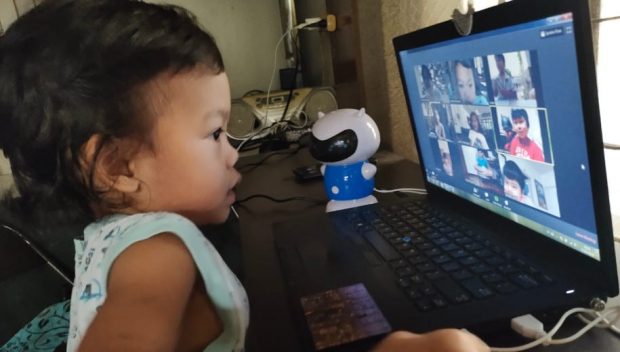
Asia’s dilemma – back to school now or not?

By: Crispin Maslog
MANILA: Calls to resume classes in Asia increasing even as vaccination against COVID-19 lags, posing health risks.
‘Close open, close open,’ goes a lesson on the first day at kindergarten as the barely six-year-old child closes and opens his hand and learns his first lessons in anatomy and language.
That basic lesson may well be the mantra today as the world debates and decides on whether to reopen schools now or keep them closed a little longer as the vaccines arrive and the COVID-19 pandemic winds up.
In the US, Canada and Europe, schools are reopening because they can rely on vaccinations and mandatory safety protocols. In Asia, countries like China, India, Japan, Singapore and South Korea are leading the drive to reopen.
However, most of the other Asian nations are only still racing to be vaccinated — if they have the vaccines available. The problem, it seems, is not even vaccine hesitancy but vaccine unavailability.
As the COVID-19 pandemic goes on, educators are unsure whether it is time to reopen the schools or not. School closures since the outbreak of COVID-19 in early 2020 have disrupted children’s education (and deprived of free school meals) around the world. Across East Asia and Pacific, such closures have affected over 325 million children, according to UNESCO figures.
Dropouts may not return
UNICEF warns that the longer children stay out of school, the less likely they are to return. At least 2.7 million children across the region will not return to school when they reopen. This is on top of the 35 million in East Asia and Pacific who had already dropped out of the educational system.
And when children are out of school, they are at increased risk of violence, abuse and exploitation. Girls face the additional risk of teen pregnancy and early marriage. The World Bank estimates that the number of children not meeting the minimum requirements for reading has increased by 20 per cent during school closures.
“Schools play a vital role in the well-being of students, families and their communities, and the link between education and health has never been more evident,” said Tedros Adhanom Ghebreyesus, WHO director-general.
In the face of such arguments, it seems that going back to school is the necessary option — the sooner the better. It is easy to be alarmed by such arguments, however. We still need to look at the other side of the issue before we decide. The better option is, as teacher says, think before you leap.
Chances are that if we reopen schools prematurely, we may be forced to close again sooner than later, as various UN studies have shown. In the Philippines, schools remained completely closed throughout most of 2020 and early 2021. The same was true for most students in Indonesia.
In response to new outbreaks of COVID-19 in January, schools closed again in Malaysia, Mongolia, Myanmar and Thailand, further disrupting the education of children who had only recently returned to their classrooms. Open and close is not a good option.
Face to face or blended learning?
If we go back to school this year, however, chances are the model would either be mainly face-to-face learning in small size classes, largely online or digital learning, or largely module learning with some digital learning, patterned after the Philippine experience, or a combination of these formulas.
Mainly online learning is not the long-term solution for millions of disadvantaged children. The Asian experience this past year has again put a spotlight on the digital divide. Around 80 million children are still unable to access digital learning at home and the pandemic only deepens the learning crisis.
On the other hand, fully face-to-face learning also is not possible now or anytime in one or two years because I foresee the COVID-19 pandemic will still be with us in Asia in one intensity or another.
The more realistic scenario is the blended system of the Philippines. The country’s Department of Education has offered its blended learning as a “good and valid way” to deliver education during the COVID-19 pandemic and even after the pandemic.
Some 27 million students in the Philippines follow the distance learning system largely through modules and, in very small part, online. Blended learning includes minimal face-to-face instruction, but some of the lessons could be learned at home through online media and modules. Children do not have to come to school every day. There are fewer classes with fewer learners. A great part of the lessons could be learned at home.
For all we know, we may never go back to the old systems again — with every class face-to-face. Instead we may adopt a variety of models that UNICEF has touted. They include governments providing education online, on television and radio, and via mobile phones.
In Timor-Leste, more children accessed remote learning through online platforms, video or radio compared to 2019. Of course, Timor-Leste is only a small country to provide meaningful lessons.
In Thailand, children from low-income families at risk of dropping out receive cash grants to keep children in schools. Vietnam revised its curriculum to reduce academic pressure and stress on students. Educators now urge us to reimagine education systems, embrace grassroots innovations, and adopt community-based technology to reduce the digital gap.
One Filipino educator tells SciDev.Net that it is time that universities re-examine their college curricula to determine if we can streamline higher education by teaching some courses online and use face-to-face teaching in others, COVID-19 or not. Some courses may be better taught online than in person, and vice versa, he adds.
Crispin C. Maslog, former journalist with Agence France-Presse, is an environmental activist and former science journalism professor, Silliman University and University of the Philippines Los Baños, Philippines. He is a founding member and now Chair of the Board, Asian Media Information and Communication Centre, Manila.
This piece was produced by SciDev.Net’s Asia & Pacific desk.


